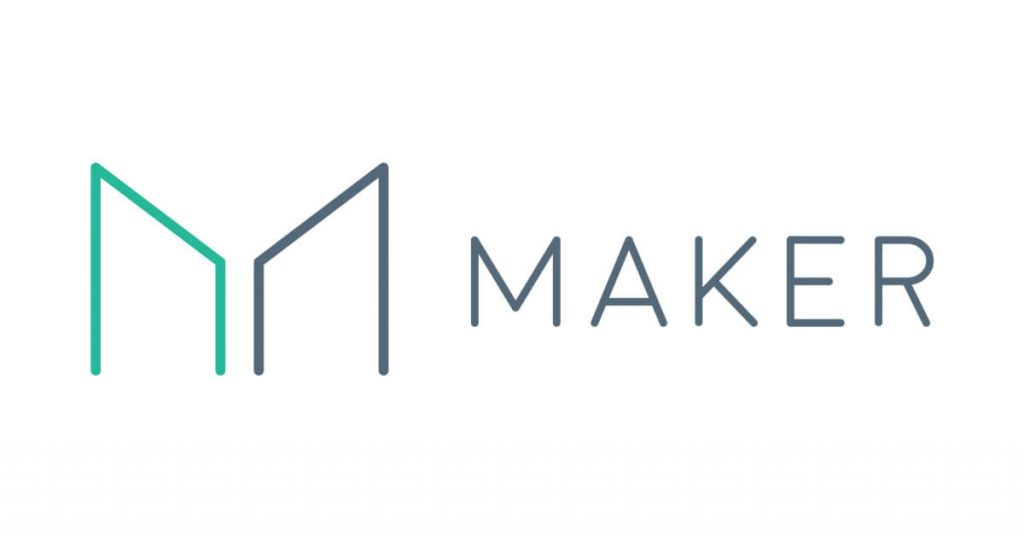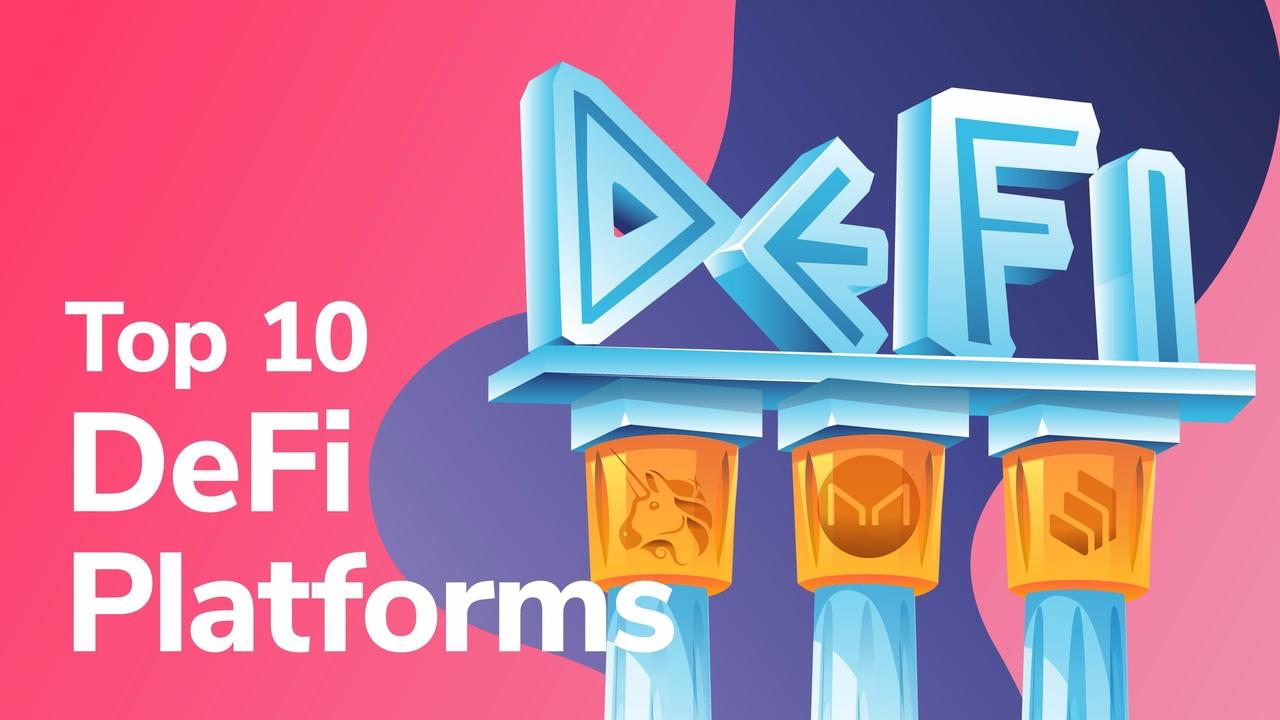
This year, some of the biggest developments in the cryptocurrency industry have been due to the uptick in decentralized finance (DeFi) platforms, offering many of the same services as the legacy financial institutions, but on-chain. This is why we are now breaking down the top 10 DeFi platforms according to the Defi Pulse listing.
There have been countless projects, some with huge success and popularity from users. In this article, we have collated the top 10 DeFi platforms as of the time of writing, from DeFi Pulse – the best place for tracking DeFi analytics and key metrics.
We have described a brief overview and background in addition to the services the platform provides. Moreover, welcome to Ivan on Tech Academy – the best place to learn about all things blockchain and crypto, and keeping up-to-date with the latest developments in the space.
In addition to the top 10 DeFi platforms that are hot right now, this also includes countless blockchain and cryptocurrency courses. Check out some of the courses offered on the Academy, and turbocharge your blockchain education today!
Top 10 DeFi Platforms 2020
Uniswap
Uniswap is, according to some, the ultimate decentralized exchange built on the Ethereum network. Instead of using order books that you would see on Binance, Uniswap uses liquidity pools for token swaps. Furthermore, there are no limit orders currently available on Uniswap.

You can swap any ERC-20 token on Uniswap, or you can provide liquidity to the protocol and earn fees in the process. Users can add liquidity to an existing pool, or even create their own pool.
Creating a liquidity pool on Uniswap is simple, you just need to supply a token pair for markets, and off you go! Exchange rates are set by the market makers using Uniswap’s “constant product market maker” mechanism. Fluctuations in asset prices between token pairs create opportunities for arbitrage, which encourages further trading.
All liquidity providers receive a fee of 0.3% proportional to the amount of liquidity provided, and liquidity can be withdrawn at any time.
Maker
MakerDAO is a decentralized borrowing and lending platform built on Ethereum. The DAO (Decentralized Autonomous Organization) is upheld by holders of the MKR governance token, who can decide on the future of the protocol by voting for or against proposals to change the platform.

Maker has two main assets; MKR and DAI.
Both MKR and DAI are ERC-20 tokens. Transaction fees on the Maker platform are paid in MKR, with the token serving as a collateral base for the platform. MKR cannot be mined, it is burned in relation to fluctuations in DAI prices so that it retains its dollar peg and serves as a governance token.
Maker offers over-collateralized loans in DAI of up to 66% of the value of the depositor’s collateral. When vaults dip below this rate, they incur a 13% penalty and are required to be liquidated to restore the vault from default. The collateral that has been liquidated is then sold on at a 3% discount.
Maker generates the stablecoin DAI, which is used in the majority of major DeFi projects. Maker can be used to create a vault, lock in crypto collateral, and generate DAI as a debt against their collateral.
Any DAI debt comes with a stability fee, which is interest that continuously accrues. This fee is paid when the borrowed DAI is repaid. The DAI Savings Rate (DSR) allows users to lock DAI into the Maker DSR contract to earn a variable interest rate denominated in DAI, derived from stability fees.
MKR holders govern the protocol’s voting system, which can decide on changes to risk parameters, the addition of assets, and stability fee levels. MKR also acts as a safeguard against ‘black swan’ events. If the overall collateral on the Maker platform dumps spontaneously, MKR is minted to raise additional collateral.
Additionally, Maker is considered by many to be the first successful decentralized finance app built on Ethereum.
Aave
Aave, Finnish for “ghost”, is described as an open-source non-custodial protocol built on Ethereum. Aave offers decentralized lending and borrowing within a sleek, user-friendly interface.

Originally launched as ETHLend in November of 2017, the peer-to-peer lending project rebranded to Aave in September 2018, with the mainnet going live in January 2020.
When supplying liquidity as a lender on Aave, the protocol mints aTokens to the value of the assets supplied. As a lender on Aave, you begin earning interest immediately, which compounds in real-time. A lender’s aTokens increase as this happens and can be transferred, exchanged, and deposited elsewhere.
Aave accepts a large variety of assets as collateral, with each offering varying interest rates and coming with different liquidation penalties. Users are free to withdraw liquidity at any time, thanks to the protocol’s liquidity reserve.
Following the recent migration from the LEND token to the AAVE token at a ratio of 100:1, the protocol is going from strength to strength, having recently captured almost 1.7 billion dollars in TVL. Early migrators can now earn interest by staking AAVE into the protocol’s Safety Module.
Aave became famous for developing flash loans, which are uncollateralized loans where both lending and borrowing, and repayment, all occur within a single transaction. This feature opened up a wave of innovation for developers and is pushing the boundaries of decentralized finance. Aave has undergone extensive external audits and operates a bug bounty program.
Curve Finance
Released in January 2020, the Curve Finance platform is a decentralized exchange and liquidity pool built on Ethereum. Curve was built for super-efficient stablecoin trading, enabling users to trade with very little slippage and low fees.

Under the hood, Curve supplies liquidity to other protocols such as Compound or yearn.finance to maximize fees earned by liquidity providers.
Liquidity is split across seven Curve pools. Each pool mints its own particular ERC-20 token to liquidity providers which can then be exchanged for many different assets. Having recently been audited in March this year, Curve looks to be striving for integrity in the DeFi space.
WBTC
WBTC allows users to put their Bitcoin to work by ‘wrapping’ it and using it in the Ethereum ecosystem. The WBTC ERC-20 token is backed 100% by Bitcoin. With so much stagnant liquidity available in BTC, it only makes sense that it would make its way to Ethereum.

Users can deposit BTC and receive an equal amount of WBTC. The BTC is held as collateral and the WBTC can be used in various DeFi protocols.
WBTC is not truly decentralized, rather it is run by a DAO of established DeFi projects such as Compound and Maker.
Users must complete KYC and AML to swap WBTC. Once they have done this, they are free to swap WBTC on a number of exchanges such as Dharma, Kyber, and Ren.
Compound
The first iteration of Compound was launched in September 2018, with an upgrade to the protocol implemented in May 2019.

Compound has been described as an Ethereum-based algorithmic money market protocol. With Compound, users can lend assets to earn liquidity or take out loans using their own crypto as collateral.
As the name suggests, interest begins to accrue immediately and compounds throughout the entire duration of the liquidity provided to the protocol. When assets are supplied to the Compound protocol, balances are represented by cTokens, which can be used as collateral or to earn interest.
Compound allows users to take out over-collateralized loans, borrowing up to 75% of their initial collateral. Collateral can be added or removed freely, but undercollateralized debts can easily become liquidated.
The protocol supports several assets and has been audited and formally verified. In May 2020, the platform moved towards decentralization by passing governance to COMP token holders.
Just as a reminder, practically all of these DeFi projects have already been covered on the Ivan on Tech Academy blog. What’s more, Ivan on Tech Academy offers courses with far greater in-depth knowledge of blockchain and cryptocurrency projects. If you are looking to enroll in Ivan on Tech Academy, as over 20,000 students already have done, you can now get 20% off with the exclusive promo code BLOG20.
Yearn.finance
The yearn.finance platform is a decentralized ecosystem that aggregates lending services, such as Aave, Compound, and Dydx. Built by Andre Cronje, control of the protocol has since been handed to a multi-signature wallet that requires a majority of participants to agree on any changes to the protocol as proposals and votes are registered on-chain.

Using Yearn, assets can be deposited and converted to yTokens. The protocol automatically rebalances your liquidity provider to maximize yield by moving liquidity to the most profitable lending service.
One of the most notable integrations of yTokens is Curve.fi. The Curve AMM (Automated Market Maker) earns both lending and trading fees for users.
The yean.finance governance token YFI is distributed to users of the platform that provide liquidity with yTokens. YFI is considered to be among the most decentralized DeFi platforms as there was no pre-mine or token allocation prior to launch.
Synthetix
Originally a stablecoin project named Havven, Synthetix was the result of a change of direction and rebranding, with a mainnet launch in February 2019. Synthetix is an Ethereum-based decentralized platform that allows for the creation of synthetic assets or Synths. Synths track the value of real-world assets on-chain and allow crypto holders to use their capital to trade non-crypto assets on a decentralized cryptocurrency-based platform.

Synthetix allows users to trade 30+ Synths that represent various stocks, commodities, and indices, with plans to further broaden the platform’s current derivatives offerings.
The native ERC-20 SNX token can be used, along with several other crypto assets, as collateral to mint Synths which are then freely tradeable.
Synthetix also has a non-custodial DEX, from which SNX holders and Synth minters earn a percentage of transaction fees, which incentivizes users to create synths and gives value to the SNX token.
RenVM
In May this year, the Ren Virtual Machine (RenVM) was released. The aim was to provide interoperability between blockchains in DeFi, acting as a bridge for different cryptocurrency ecosystems.

RenVM acts as a sort of custodian for various crypto assets as they move between different blockchains.
One of the most common use cases for RenVM is bringing Bitcoin into the DeFi ecosystem. By providing BTC to RenVM, newly minted renBTC tokens enter the Ethereum ecosystem, pegged to the price of Bitcoin.
The Ren network is powered by ‘dark nodes’ that stake the REN token to earn fees from network transactions.
Balancer
Balancer is an automated market-maker built on the Ethereum network. Balancer allows users to create customizable liquidity pools, or add existing pools to earn fees from trading.

Balancer allows any weight of any number of tokens within a pool. Pools are rebalanced by traders, and liquidity providers collect fees from these trades.
Balancer has different types of pools and is built to be composable.
- Private pools can only add liquidity from the pool owner, who has full control over the pool and any changes to its parameters.
- Shared Pools give no special rights to the pool owner and weights and fees are set to be permanent. Anyone can add liquidity to shared pools.
- Smart Pools are similar to Private Pools, however, the pool is controlled by a smart contract, which takes care of arbitrary parameter changes. Smart Pools also allow anyone to provide liquidity.
In March this year, Balancer launched its native BAL token which is minted through liquidity mining. Despite an early hack to the protocol where huge sums of assets were drained, Balancer has been audited and has repaired much of the damage caused to the reputation of the protocol.
Top 10 DeFi Platforms: Conclusion
As you can see, there are plenty of options out there to choose from to help pave the way from the use of traditional financial instruments, to decentralized financial freedom. The surge in adoption over the past 12 months has been exponential – By September 30th, 2019 the total value locked (TVL) showed on DeFi Pulse was $519 million. On September 30th, 2020, we reached a new all-time high of $11.23 billion.
The increase of DeFi users is great for crypto, leading toward the global adoption of cryptocurrency where platforms like these could be offered to anyone with an internet connection.
These DeFi services amongst others, offer exciting opportunities for people in developing countries and those living in struggling economies. The availability of such financial tools can help rebuild local economies or at the very least, allow individuals to take control of their wealth, hedging against their native fiat currency.
We hope you understand a little more about the top 10 DeFi platforms and feel more confident about where and how to go about dipping your toes into DeFi. If you’re new to cryptocurrency make sure to check out how to keep your crypto safe, alongside how to recognize a scam, to ensure your crypto journey is enlightening, and not predisposed to any malicious attacks.
Ivan on Tech Academy is the best place to learn about blockchain and cryptocurrencies, suitable for beginners in the industry with no previous programming, computer science, or financial experience needed! Enroll in one of our many courses relating to DeFi, blockchain and crypto today!





